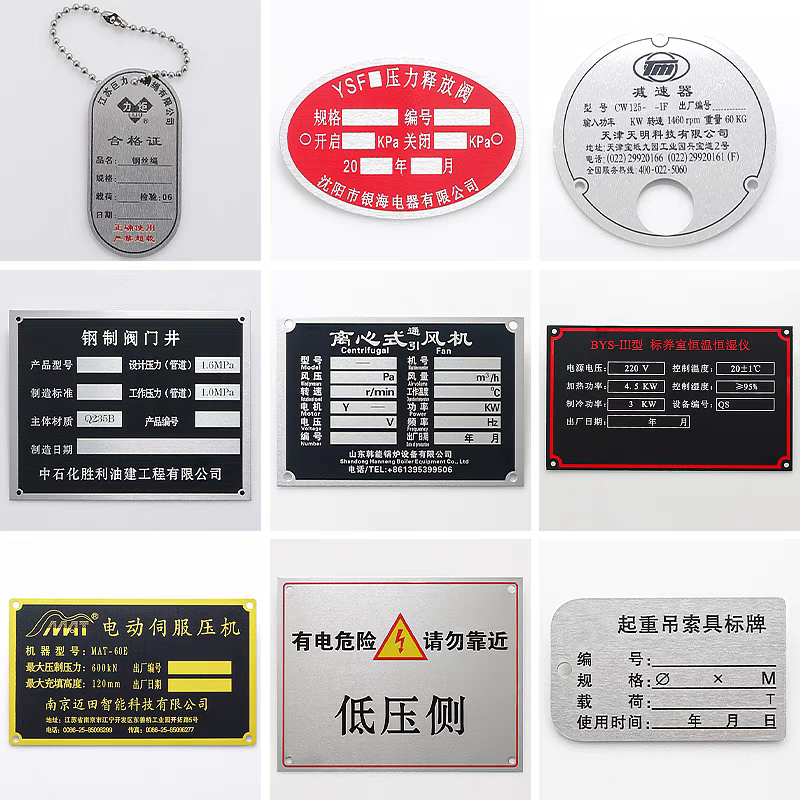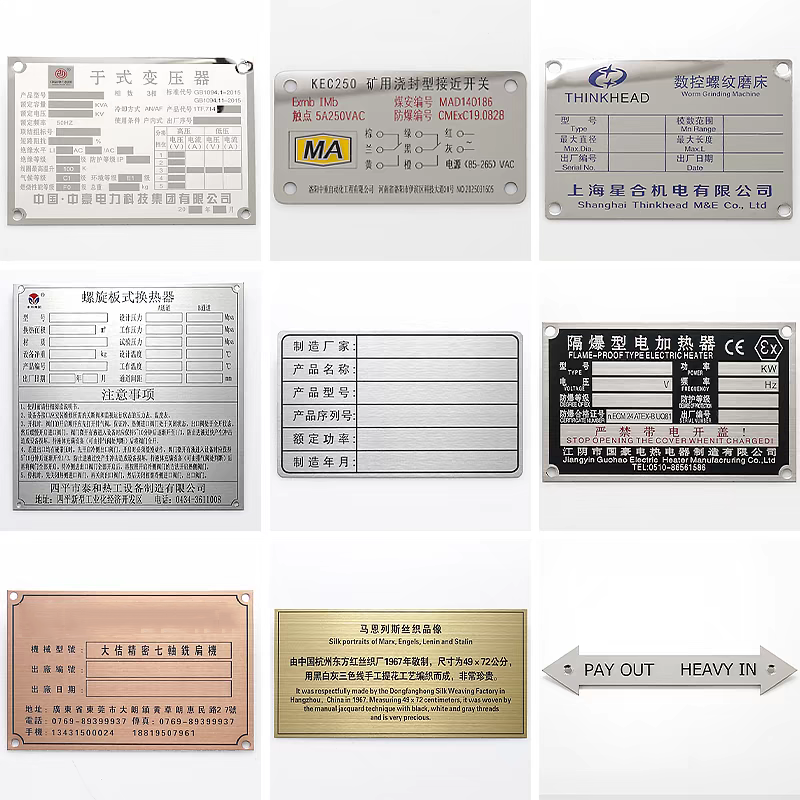Electrical conduit labels are a critical component in any electrical system, serving as essential identifiers for conduits that house and protect electrical wiring. These labels provide crucial information about the contents, voltage, direction, and purpose of the conduits, helping to prevent accidents, streamline maintenance, and ensure compliance with safety standards. In industrial, commercial, and residential settings, proper labeling of electrical conduits is not just a best practice—it's often a legal requirement. Without clear and durable labels, electricians and maintenance personnel might face hazards such as electric shocks, fires, or system failures. This article delves into the various aspects of electrical conduit labels, explaining their importance, types, selection criteria, installation best practices, and regulatory requirements. By understanding these elements, you can enhance safety, improve efficiency, and avoid costly mistakes in your electrical projects.

What Are Electrical Conduit Labels?
Electrical conduit labels are specialized markers attached to electrical conduits—pipes or tubes used to protect and route electrical wiring. These labels convey vital information, such as circuit identification, voltage levels, current capacity, and destination points. Typically made from durable materials like vinyl, polyester, or aluminum, they are designed to withstand harsh environments, including exposure to moisture, chemicals, and extreme temperatures. Electrical conduit labels often include text, symbols, color codes, and barcodes to facilitate quick recognition and data tracking. For instance, a label might indicate "480V AC Circuit 5" with a hazard symbol, ensuring that anyone working on the system understands the risks involved. By providing clear, permanent identification, these labels help prevent miswiring, reduce downtime during repairs, and support efficient asset management. In essence, they act as a communication tool between the electrical system and its handlers, bridging the gap between complex installations and safe operations.
Why Are Electrical Conduit Labels Important for Safety?
The primary role of electrical conduit labels is to enhance safety in electrical environments. Misidentified or unlabeled conduits can lead to severe accidents, including electrocution, arc flashes, and fires. For example, if a maintenance worker mistakenly opens a conduit carrying high voltage without proper warning, it could result in injury or fatalities. Electrical conduit labels mitigate these risks by providing explicit warnings and instructions. They ensure compliance with safety standards like the National Electrical Code (NEC) and OSHA regulations, which mandate proper labeling for hazard communication. Additionally, in emergencies such as fires or power outages, clearly labeled conduits enable first responders to quickly isolate circuits, reducing response times and potential damage. Beyond immediate safety, these labels contribute to long-term risk management by facilitating regular inspections and audits. By investing in high-quality electrical conduit labels, organizations demonstrate a commitment to workplace safety, potentially lowering insurance premiums and avoiding legal liabilities.
What Types of Electrical Conduit Labels Are Available?
Electrical conduit labels come in various types to suit different applications and environments. Common categories include pre-printed labels, which feature standard messages like "High Voltage" or "Emergency Circuit," and customizable labels that allow for specific information such as circuit numbers or dates. Material-wise, vinyl labels are popular for indoor use due to their affordability and flexibility, while polyester and aluminum labels offer superior durability for outdoor or industrial settings exposed to UV rays, chemicals, or abrasion. Another type is the wrap-around label, which encircles the conduit for visibility from all angles, ideal for crowded conduit runs. Color-coded electrical conduit labels are also widely used; for instance, red might indicate danger or high voltage, and yellow could signal caution. Furthermore, some labels incorporate thermal transfer or laser printing for permanent legibility, and others include adhesive backings for easy application. Understanding these options helps in selecting the right electrical conduit labels for specific needs, whether in a data center, manufacturing plant, or residential building.
How Do You Choose the Right Electrical Conduit Labels?
Selecting the appropriate electrical conduit labels involves considering factors such as environment, durability, compliance, and usability. First, assess the installation environment: for indoor areas with moderate conditions, standard vinyl labels may suffice, but for outdoor or harsh industrial sites, opt for materials like polyester or metal that resist moisture, temperature extremes, and chemicals. Next, evaluate durability requirements; labels should be legible over time, so look for options with UV resistance and laminates for added protection. Compliance is crucial—ensure the labels meet relevant standards, such as NEC Article 110.21 for field-applied markings or international norms like IEC 60445. Usability aspects include adhesion strength (e.g., permanent adhesives for permanent installations) and readability, with clear fonts and high-contrast colors. Also, consider whether pre-printed or blank labels are more cost-effective for your project. For large-scale operations, customizable electrical conduit labels with barcodes or QR codes can integrate with asset management systems, enhancing traceability. By carefully evaluating these factors, you can choose electrical conduit labels that optimize safety, efficiency, and longevity.

What Are the Best Practices for Installing Electrical Conduit Labels?
Proper installation of electrical conduit labels is key to their effectiveness. Start by cleaning the conduit surface thoroughly to remove dirt, grease, or moisture, ensuring strong adhesion. Apply labels at consistent heights and orientations, typically near junctions, access points, or every 10-20 feet along long runs, as per NEC guidelines. Use wrap-around labels for cylindrical conduits to maintain visibility from all directions. Avoid placing labels on seams or bends where they might peel off. For permanent installations, consider using label applicators or templates to achieve precise alignment. It's also important to update labels whenever changes occur in the electrical system to prevent misinformation. Training personnel on correct installation techniques, such as applying pressure evenly to eliminate air bubbles, can prevent premature failure. Additionally, document the labeling scheme in as-built drawings or digital records for future reference. By following these best practices, electrical conduit labels remain legible and functional, supporting safe operations and reducing the risk of errors during maintenance or upgrades.
What Regulations and Standards Govern Electrical Conduit Labels?
Electrical conduit labels are subject to various regulations and standards to ensure uniformity and safety. In the United States, the NEC (National Electrical Code) outlines requirements for identifying electrical conductors and conduits, such as in Articles 110 and 225, which mandate labeling for voltage, phase, and system grounding. OSHA (Occupational Safety and Health Administration) regulations, particularly 29 CFR 1910.303, emphasize the need for clear identification to prevent accidents. Internationally, standards like IEC 60445 provide guidelines for safety principles and marking. Other relevant standards include UL 969 for label durability and ANSI Z535 for hazard communication symbols and colors. Compliance with these regulations not only avoids fines and legal issues but also promotes a culture of safety. Organizations should regularly review updates to these standards, as they evolve with technological advancements. By adhering to these guidelines, electrical conduit labels help maintain interoperability across systems and ensure that all stakeholders, from electricians to inspectors, can interpret the information correctly.
How Do Electrical Conduit Labels Support Maintenance and Efficiency?
Beyond safety, electrical conduit labels play a vital role in maintenance and operational efficiency. Clearly labeled conduits enable quick identification during troubleshooting, reducing downtime and labor costs. For instance, in a facility with hundreds of conduits, labels with unique identifiers allow technicians to locate specific circuits without tracing wires manually. This is especially valuable in complex environments like power plants or IT server rooms, where time-sensitive repairs are critical. Electrical conduit labels also facilitate preventive maintenance by providing historical data, such as installation dates or last inspection records, when combined with digital systems. Moreover, they support inventory management and asset tracking through barcodes or RFID integration. By streamlining processes, these labels contribute to overall productivity and cost savings. In the long run, investing in robust electrical conduit labels minimizes errors, enhances workflow, and extends the lifespan of electrical systems, making them an indispensable tool for modern infrastructure management.
In conclusion, electrical conduit labels are more than just simple markers; they are integral to ensuring safety, compliance, and efficiency in electrical systems. From defining their basic purpose to exploring types, selection criteria, installation practices, and regulatory frameworks, this article has covered the essential aspects that highlight their importance. By implementing high-quality electrical conduit labels and adhering to best practices, organizations can protect personnel, optimize operations, and meet legal requirements. As technology advances, we can expect innovations in smart labeling, but the core principles of clarity and durability will remain paramount. Remember, proper labeling is a small investment that pays significant dividends in risk reduction and operational excellence.
Frequently Asked Questions About Electrical Conduit Labels
Q1: What information should be included on an electrical conduit label?
A1: An electrical conduit label should include key details such as voltage rating, circuit number or identifier, phase information, destination or purpose (e.g., "Lighting Circuit" or "Emergency Power"), and any hazard warnings. Additionally, labels may feature dates of installation, barcodes for tracking, and compliance symbols to meet safety standards like NEC or OSHA requirements.
Q2: How long do electrical conduit labels typically last?
A2: The lifespan of electrical conduit labels depends on the material and environment. For example, vinyl labels may last 5-7 years indoors, while durable materials like polyester or aluminum can endure 10+ years outdoors, resisting UV exposure, moisture, and chemicals. Regular inspections are recommended to ensure labels remain legible and intact.
Q3: Can electrical conduit labels be customized for specific applications?
A3: Yes, many manufacturers offer customizable electrical conduit labels that allow you to add text, logos, colors, and symbols tailored to your needs. This is ideal for unique installations, such as in industrial plants or data centers, where specific identifiers improve safety and organization.
Q4: Are there color standards for electrical conduit labels?
A4: While not universally mandated, color coding is often used based on industry best practices or internal standards. For instance, red might indicate high voltage or danger, yellow for caution, and green for grounding. It's important to document and consistently apply color schemes to avoid confusion, referencing standards like ANSI Z535 for guidance.
Q5: What should I do if an electrical conduit label becomes damaged or unreadable?
A5: If a label is damaged, replace it immediately to maintain safety and compliance. Remove the old label, clean the surface, and apply a new one with the same information. Regularly scheduled inspections can help identify worn labels before they cause issues, ensuring continuous protection and clarity in your electrical systems.






